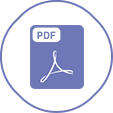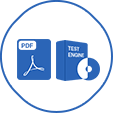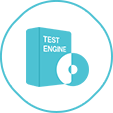Simple Queues in MikroTik are the most straightforward way to manage bandwidth per IP address or subnet. To apply bandwidth limitations, you primarily need:
target-address (the IP address or subnet you're shaping)
max-limit (the maximum allowable upload/download bandwidth)
Other fields like dst-address can be used for advanced matching, but they are not required for basic bandwidth limiting.
A. Correct. This is the minimum required configuration.
B. Incorrect. dst-address is optional and unnecessary unless shaping traffic only to specific destinations.
C. Incorrect. Lacks max-limit, which is essential for any bandwidth cap.
D. Incorrect. Without target-address, the queue doesn’t know which host or network to apply the rule to.
Extract from Official MTCNA Course Material – QoS Section:
"To shape traffic in a simple queue, the most basic configuration requires target-address and max-limit. Target-address specifies which host or network to affect. Max-limit defines upload/download caps."
Extract from René Meneses MTCNA Study Guide – QoS:
"A simple queue needs at least two values: target (the IP or range) and max-limit (limits for up/down in bits per second). Everything else is optional for basic shaping."
Extract from Terry Combs Notes – Queues:
“Without a max-limit value, the queue does not restrict bandwidth. dst-address is rarely used in simple queues unless traffic is routed externally.”
===========








